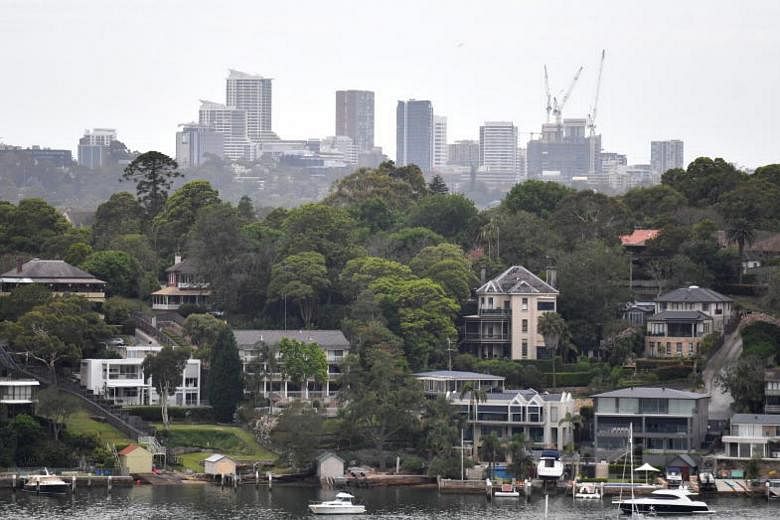SYDNEY (BLOOMBERG) - Sydney's property market slump has reached a new milestone, with values falling further than the late 1980s when Australia was on the cusp of entering its last recession.
Average Sydney home values have fallen 10.1 per cent since their 2017 peak, CoreLogic Inc's head of research Tim Lawless said on Tuesday (Dec 11), citing data as of Dec 7. That surpasses the top-to-bottom decline of 9.6 per cent recorded between 1989 and 1991.
The declines in Australia's most populous city are accelerating as tighter mortgage lending standards crimp the amount people can borrow and as nervous buyers sit on the sidelines. While local policy makers are monitoring the market closely, none appear nervous of an outright crash.
Sydney was the epicentre of a five-year boom and prices are still more than 60 per cent higher than they were in 2012. That means few existing homeowners are underwater, and the major banks, which dominate about 80 per cent of the mortgage market, have plenty of buffer before losses would bite.
"We are obviously past the cycle peak in housing and prices naturally are coming off," Craig Vardy, BlackRock Inc's head of fixed income for Australia, said at a briefing in Sydney on Tuesday. "Moderation in the housing market is expected to continue."
Vardy said that the housing slump could be "prolonged" over the next 12 to 18 months and national house prices could fall another 10 per cent.
Separate data from the Australian Bureau of Statistics on Tuesday showed Sydney prices fell 1.9 per cent in the three months to the end of September, the worst quarterly performance since March 2005.
The biggest driver of the falls has been a gradual tightening of credit standards over the past four years. Concerned that standards had become too lax and the market was overheating, regulators limited the number of interest-only mortgages and pressed banks to tighten scrutiny of income and expense verification. Analysts estimate the maximum amount households can borrow has been reduced by about 20 per cent.
Australian authorities have repeatedly emphasized the declines are desirable as the boom was unsustainable, and have suggested the market is now returning more normal conditions.
In its latest survey of Australia, the OECD however warned that soft landings in housing markets are rare internationally and the country should be ready to respond to the risk of a significant price decline. Additionally, the Reserve Bank of Australia's No. 2 official Guy Debelle said banks risked exacerbating the slump if they all pulled back from lending simultaneously.
Still, mortgage data released on Monday surprised to the upside, with the value of new loans to owner-occupier buyers jumping 3.5 per cent in October, the most since August 2015.
Mortgage lending has been the primary driver of bank profits over the past few years, leading bank analysts to downgrade their expectations of future earnings. However, concerns about potential losses are muted because Australian banks rarely lend above an 80 per cent loan-to-value ratio without a separate insurance policy. That means the property price declines would need to be much deeper to really hurt the existing portfolio.
While impaired loans have edged up, they remain very low by historic levels, Moody's Investors Service said in a recent report. The banks "have healthy collateral buffers against mortgage losses," Moody's said.
The major concern for the central bank is whether declining house prices will cause consumers to cut back on spending - the so-called wealth effect - potentially causing a knock-on decline to the whole economy. Traders are pricing in little chance of a rate rise next year, with some betting that now the next move in rates could be down.

